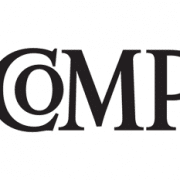Rethinking DEI in an Era of Outrage

Is DEI a long-overdue solution for centuries of prejudice or a diabolical power grab by underqualified progressives? Is it a way to enable a more empowered and effective generation of corporate leaders or a way to define and categorize human beings in limited, simplistic, social identity categories? No one agrees, but everyone is sure they know the answer.
Asking “What is DEI” is like asking David Foster Wallace’s seminal question about water. Is it solid, liquid, or vapor? Is it something we need to live or something that can kill us? Is it a thing or an action? A place or an idea? The answer to all is: It depends, but that doesn’t make a suitable dictionary entry. Indeed, trying to pin down a definition from any angle leads to the same endpoint: almost, not quite.
DEI is just as slippery a concept. It means different things to different people at different times, frustrating any attempt to find a singular definition.
Nonetheless, the debate over DEI has become ever more vicious, fruitless, and oversimplified. Critics and supporters alike seem to flatten its complexities to serve their agendas. Supporters deploy it as a platform for untenable censorship, and detractors make it a scapegoat for everything they find wrong in academia, politics, and business. (Even the Francis Scott Key Bridge collapse isn’t immune.) Few benefit from any of this, and we are all left with flaming X threads, donor proxy wars, and general acrimony.
The authors are both at the NYU Stern School of Business. Alison is a clinical professor teaching required classes in ethics, and Bell is an MBA student. It’s clear to both of us that the way these ideas have been implemented in many organizations is a big problem that has become taboo to discuss constructively. The debate over DEI has turned into a conflict between those who question the idea’s very premise and those who view any critique of current approaches as an attack on that premise. There’s little useful guidance for corporations that recognize an imperative to meet the expectations of a new generation of workers but do not wish to open themselves up to legal or political attacks.
Alison, who is middle-aged, White, and British, has heard from talented students who, upon arriving to begin internships at organizations, were scornfully introduced as “diversity hires.” Several reported that their confidence was consequently shattered and their performance hamstrung. She’s also heard undergraduate students mutter that it’s “impossible” to get hired at this or that firm these days if you are a White man. Bell, who is 29, Black, and queer, has had their competence questioned in the office, losing assignments as a summer associate to junior employees by managers who opposed DEI. In work as an alumni interviewer for Stanford University, Bell has also seen how fear of “stolen opportunities” frightens white high school seniors. These are brilliant teens years away from their first corporate job; they should be worried about prom rather than whether a transforming workforce will have room for them or not. The jobs they want may not yet exist, so why on Earth are they so concerned that DEI is taking them away?
Companies need to guard against the impulse to classify employees into rigid identity groups that compromise team cohesion. However well-intentioned, such social engineering invariably drags management into culture wars that most stakeholders want to avoid. The myth of meritocracy, whereby leaders used to claim they don’t “see” distinctions of race or gender, has been replaced by an equally problematic delusion: that we can understand someone’s values, beliefs, talents, and opinions solely on the basis of a single identity category. Human beings are not so simple.
Many organizations have chosen to focus on the representation of women and people of color in C-suites and on Boards. Not only does this approach fail to address discrimination in hiring and promotion, research shows that diversifying top management and board membership in race and gender has made them more politically monolithic, not less. Atop corporations, one conformity has been replaced with another.
Subscribe to the Ethical Systems newsletter
Some companies now focus on training packages aimed at tackling unconscious bias and psychological safety. A result of recent exhortations to ‘bring your whole self to work’ has been an advance by human resources teams into homes and personal lives. Now, everything from our keystrokes to the mood of our emails is monitored. Articles implore managers to provide employees with cognitive behavioral therapy on the fly, and new policies regarding staff social media use seek to control online speech, even in a personal context.
Finally, there are genuine problems with pipelines and retention, issues that are so deeply rooted that they are understandably difficult to address. In the current zeitgeist of impatience, acknowledging this has become tricky, leaving corporations in the awkward position of defending DEI efforts from beneficiaries who still don’t think the actions are sufficiently aggressive. Bell experienced this at an inclusive recruiting program at which attendees openly blasted companies for non-inclusive recruiting. At a design firm she worked with, Alison has seen employees who benefited from a lack of diversity in the hiring pipeline loudly criticize leaders for failing to diversify. Such cognitive dissonance is striking and unproductive.
It’s clear to both of us that DEI can and must do better, something well within the realm of possibility, given the prospective advantages to both employers and early-career talent. Corporations want hard workers who will add value and bring fresh perspective to the table. The young people in MBA classrooms want to work for leaders who consider a broader range of perspectives, appreciate the views of their customer bases, and reflect the demographics of today’s workforce (i.e., teams that contain more than middle-aged White men).
What would this actually take to achieve? This is a question DEI critics never fully engage with. It’s telling that the debate has been reframed as a problem of unfair boosts for minorities, rather than an overdue correction to the dominance of a single identity group whose average member did not obtain positions through merit alone.
DEI should never rely on a legalistic approach that mandates the “right” proportions of protected classes in the “right” roles; no organization is Noah’s Ark. Nor should DEI direct us to organize into disparate tribes that will view one another in increasingly flattened, simplistic terms. DEI should serve as an invitation to debate, inquire, and open organizational leadership to a broader range of voices. We all desperately need to escape groupthink, not double down on it.
In truth, we don’t yet know whether greater diversity or inclusion actually “work.” That’s because we haven’t tried it. As Stern professor Jonathan Haidt and co-author Greg Lukianoff quoted Hanna Holborn Gray, longtime president of the University of Chicago: “Education should not be intended to make people comfortable; it is meant to make them think.” As student and professor, Bell and Alison respectively hope that by yelling less and thinking a lot more, we can all work to transform a chaotic and shrill debate over DEI into something far more productive.








